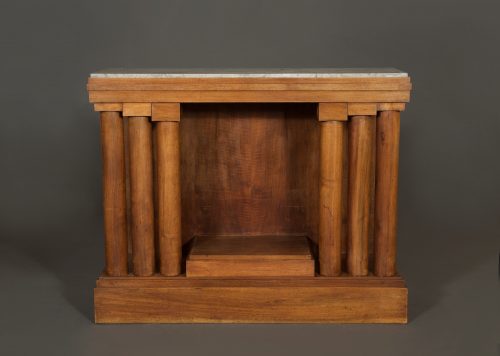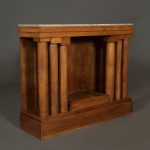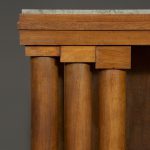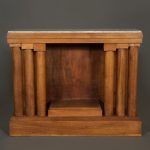11431 AN IMPOSING FADED WALNUT SIDE TABLE OF ARCHITECTURAL FORM COMBINING A DISPLAY PLINTH UPSTAND Possibly French. Second Quarter Of The twentieth Century Measurements: Width: 50 1/2″ (128.3 cm) Height: 40 3/4″ (103.5 cm) Depth: 14 3/4″ (37.4 cm).

Research
Of solid and veneered walnut. The original mottled Belgio marble inset rectangular top rests upon a stepped frieze which is supported by three closely grouped plain assenting columns with block capitals and continuous veneered backboard. The stepped plinth centered by an upstand for the display of a vase or sculpture. Repair to part of backboard.
The present side table adopts an architectural form that bears a resemblance to a classical portico. The closely grouped trio of columns to each side create a sort of “entryway,” while the plinth upstand incorporated at the center of the base serves to display a worthy sculpture or objet d’art. However, the use of a grouping of three columns whose block form capitals are arranged in descending order appears to be a unique design concept.
The discovery of ancient Egyptian, Greek and Roman cities, and study of their monuments and artifacts, inspired classical architecturally-devised decoration on all manner of furniture and decorative objects during the neoclassical and Regency periods of the late eighteenth an early nineteenth centuries. A subsequent revival of this style in the twentieth century was experienced on both sides of the Atlantic. The pared down interpretation found in the present table is neutral and versatile enough to accommodate a number of interior decorative schemes, while remaining of historical and scholarly interest.



Comments are closed.